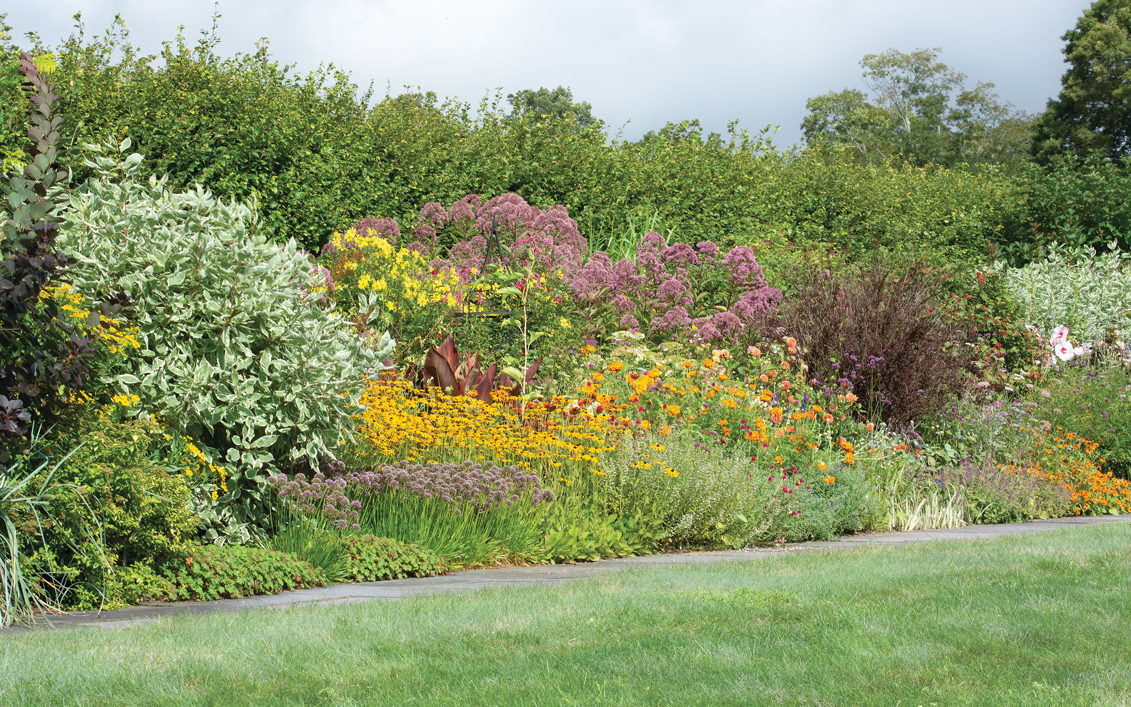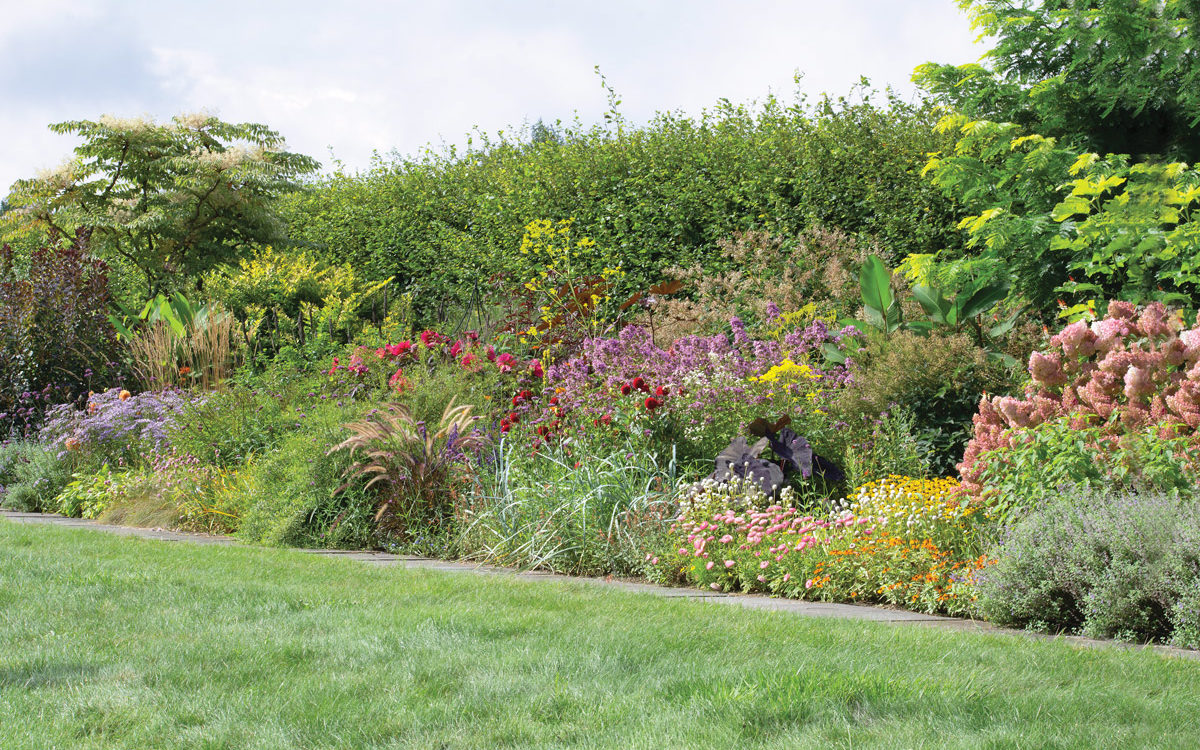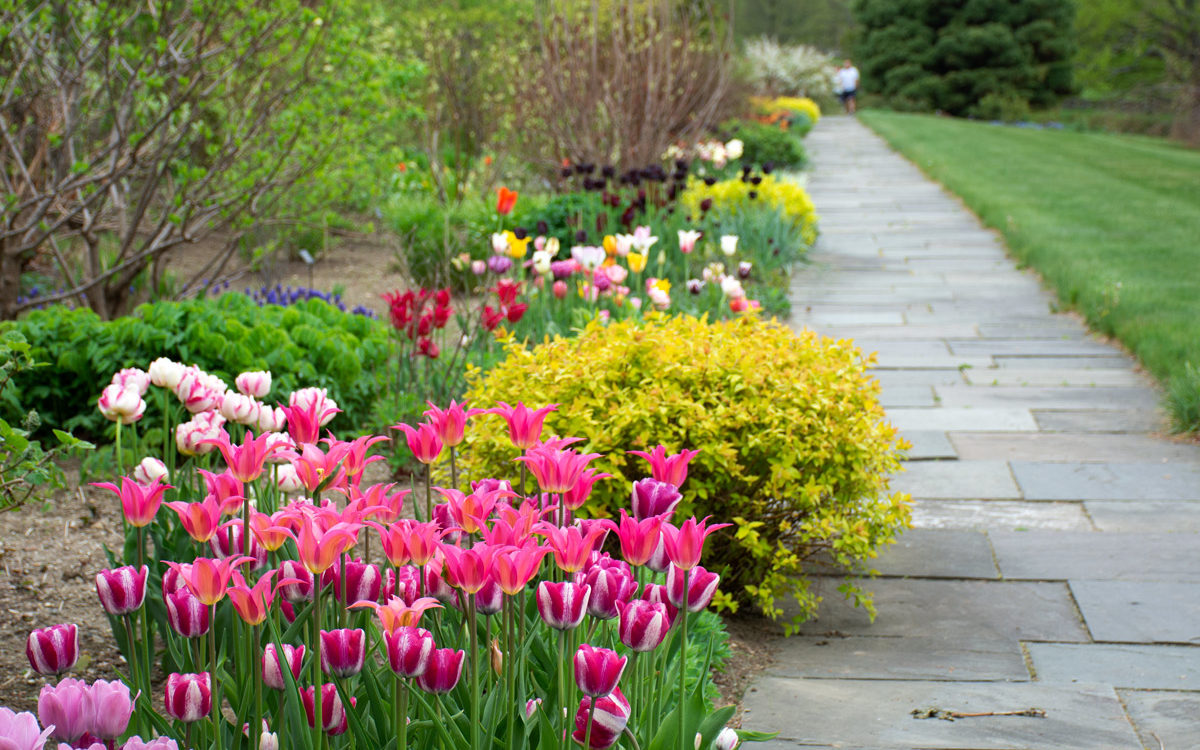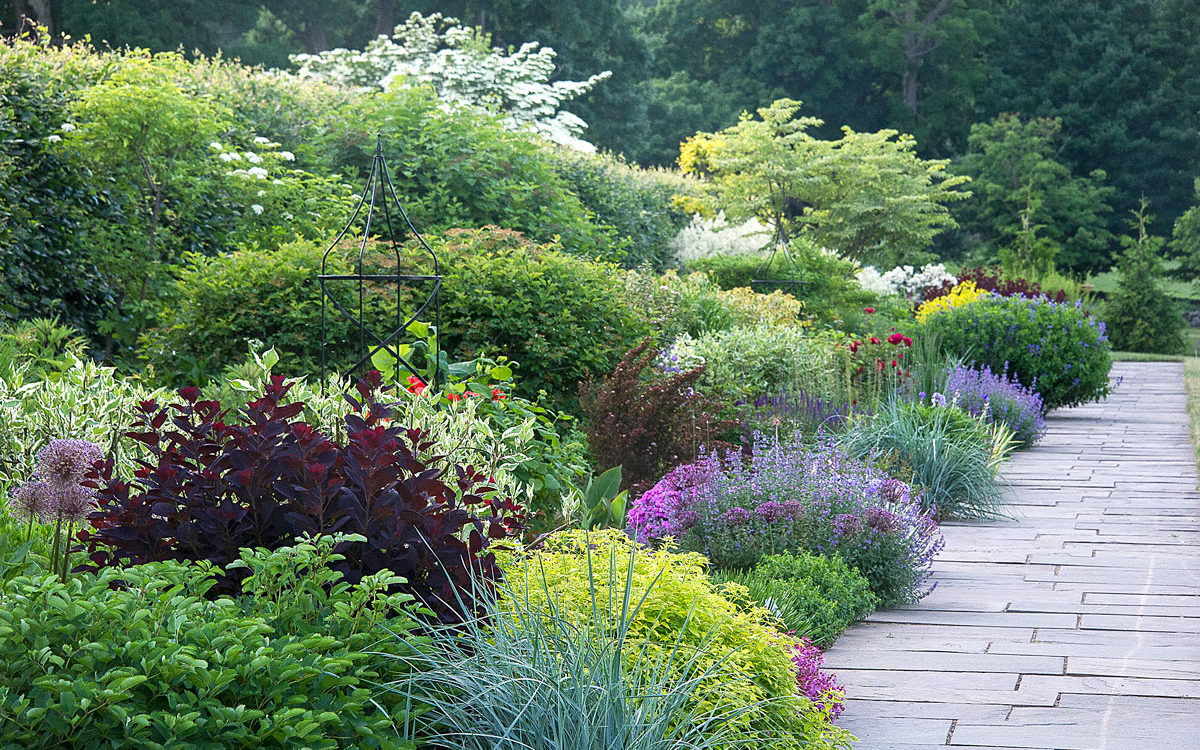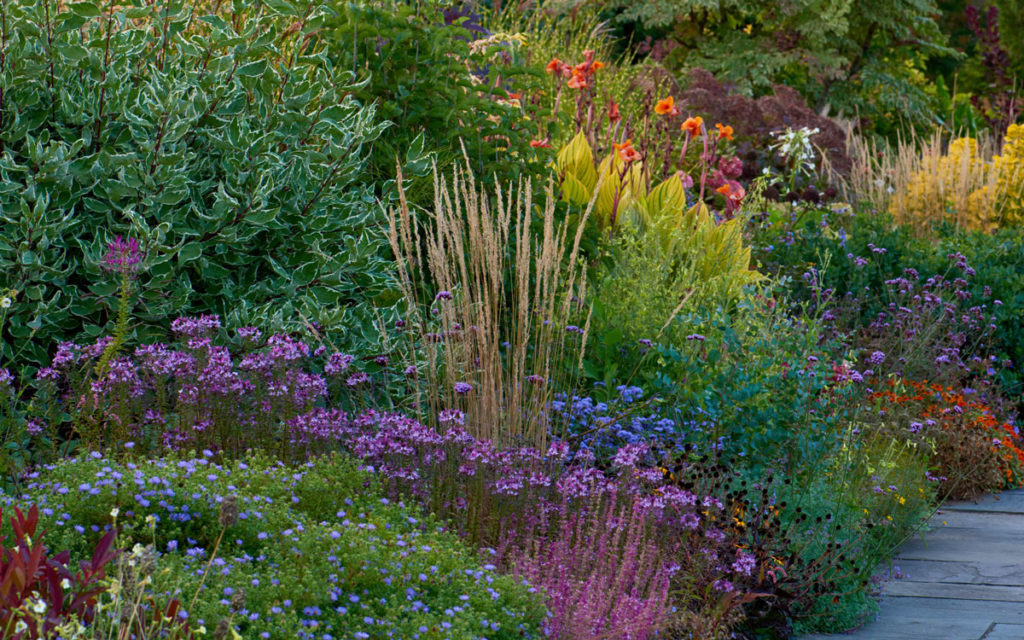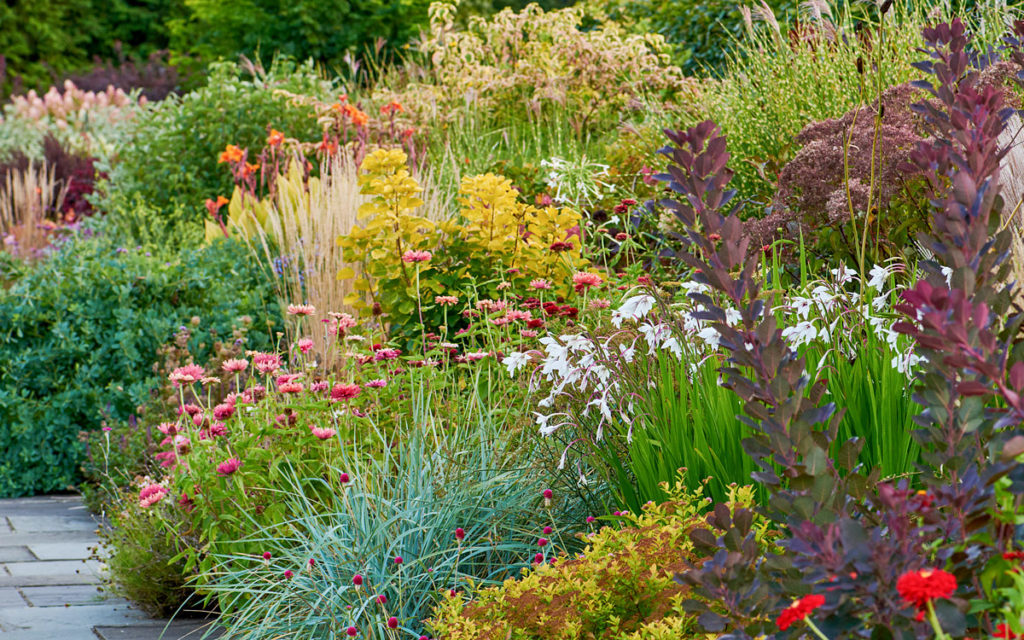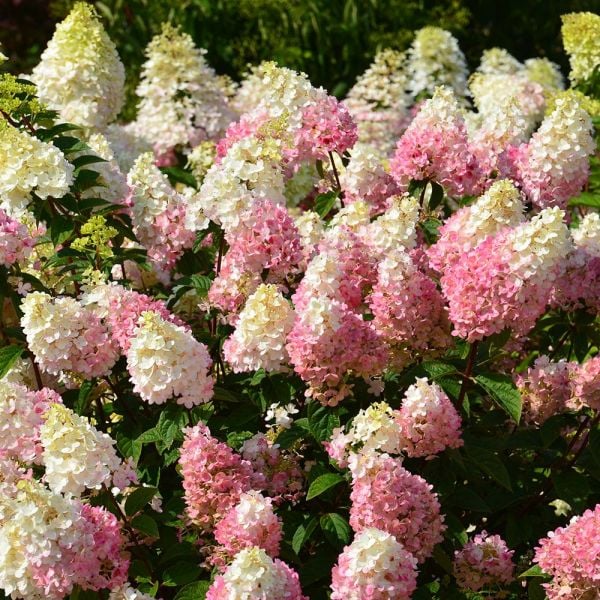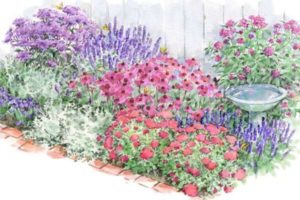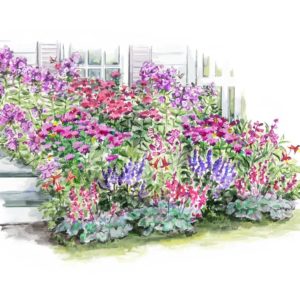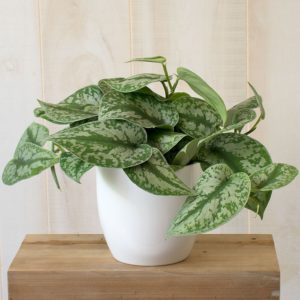When WWII veteran and Wye College horticulture graduate Christopher Lloyd returned home as a young man to Great Dixter, the 57-acre English estate where he and his five siblings had been raised, he began what would become decades of experimentation in garden design that would result in 15 books, countless columns and articles for magazines and newspapers, and a legacy of provocation and innovation that continues to exert tremendous influence on gardeners and designers all over the world. By building on structural plantings credited to architect Edwin Lutyens, and encouraged by Daisy, his aptly named, unconventional, wildflower-loving mother, Lloyd created a living laboratory where borders were designed to include a diverse mix of plants — bulbs, perennials, shrubs, trees, and vines; color combinations were daring; diverse forms and textures were welcome; a naturalistic style took its cues from Nature with allowances for interplanting, self-sowing, and some degree of crowding; and a spirit of wildness was always at play. Lloyd did all of this with a profound respect for the natural world that had been instilled in him by both parents and which remains a prescient feature of his legacy.
We at the farm are honored to tend, maintain, and perpetually renew our own Lloyd Border, which was named in honor of the great English plantsman and writer. The 280′ x 20′ expanse was designed by Lloyd’s longtime assistant Fergus Garrett, who has continued as steward and head gardener at Great Dixter since Lloyd’s death in 2006. White Flower Farm’s Lloyd Border was first planted in the fall of 2001, and although it has evolved (by design) over the years, it remains a living tribute to Lloyd and a hallmark of his and Garrett’s gardening style.
As visitors are aware, our Lloyd Border is framed by a slate walkway in front (the better for strolling) and a hedge of European Beech (Fagus sylvatica) behind. The garden contains more than 3,000 individual bulbs, perennials, shrubs, trees, and annuals from roughly 200 genera. The plant mix changes year to year but the border’s “bones” and Lloyd’s overriding design principles as interpreted by Garrett and White Flower Farm’s head gardener Cheryl Whalen remain constants.
As you tend your own garden, you may wish to consider design principles that Christopher Lloyd practiced, popularized, and bequeathed to all of us. As we have learned, they never go out of style!
Design Tips from the Lloyd Border
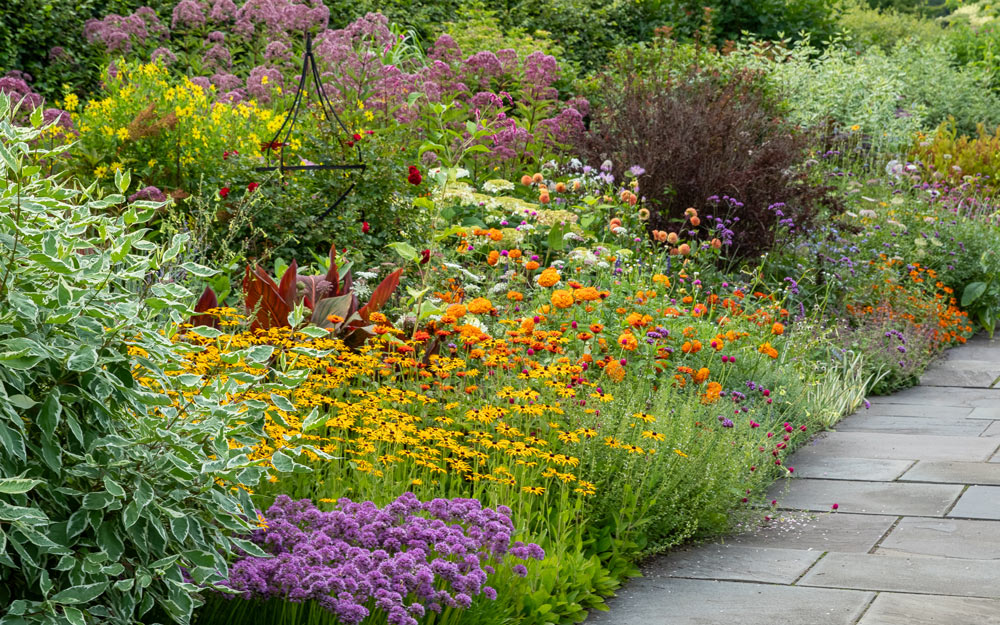
Plant a mix & mix things up. “The borders [at Great Dixter] are mixed plantings of trees, shrubs, perennials, biennials, annuals and climbers,” Garrett says. “The trees and shrubs give us structure, the perennials give us our main season along with self-sowing biennials that soften the picture. Everything is underplanted with bulbs, with pockets of annuals and ephemerals that stretch the display from spring through to autumn.”
Plant in groups and repeat your groupings to create a sense of unity and cohesion.
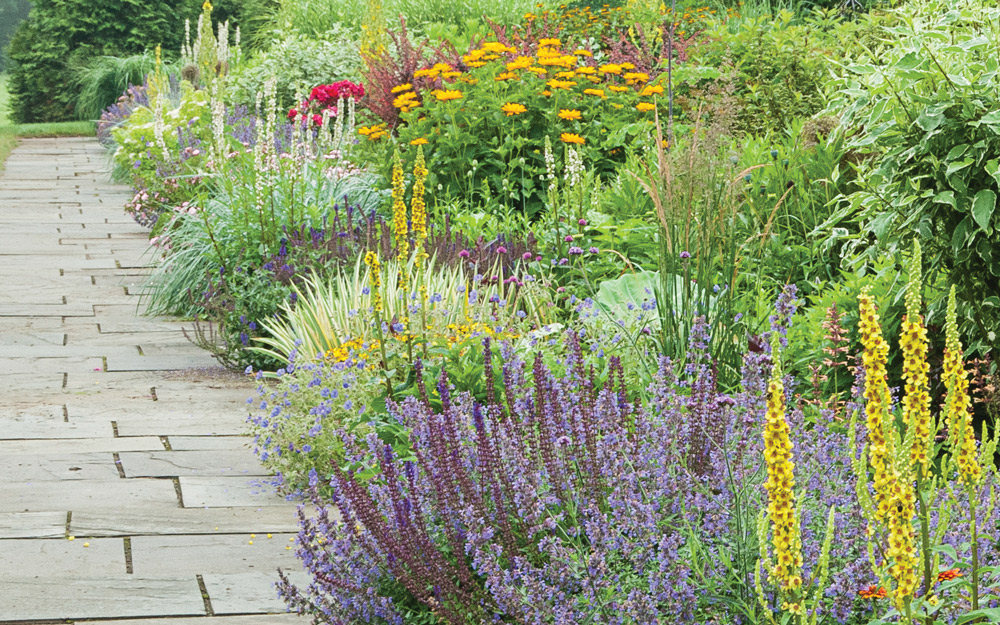
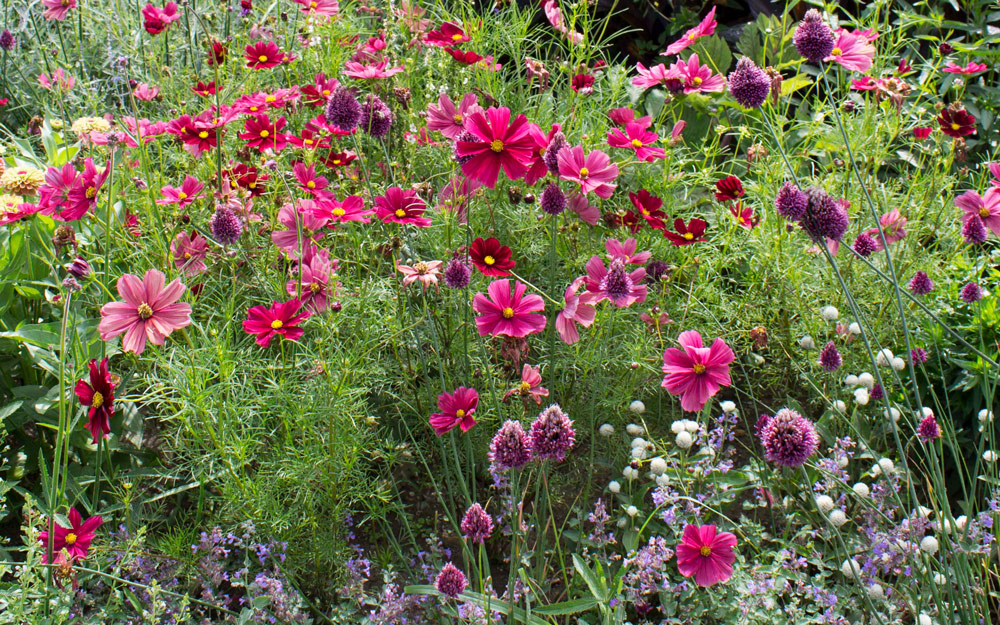
Invite plants to self-sow and intermingle. In lieu of planting in tidy blocks or stranding individual perennials or shrubs on an island of mulch, let plants grow as they do in Nature. If a vertical Verbascum pops up at the edge of your border, let it be an attraction rather than a weed. If Goldenrod appears alongside a shrub or in the middle of a sweep of perennials, welcome its arrival and the color and life it brings to the late-season garden. (Pollinators will thank you.)
Suit yourself. Choose a color palette you like best. Don’t be afraid to be bold or unconventional. Lloyd eschewed traditional English pastels and was known for bolder combinations including purple and orange, reds and purples, darkest burgundy and yellow.
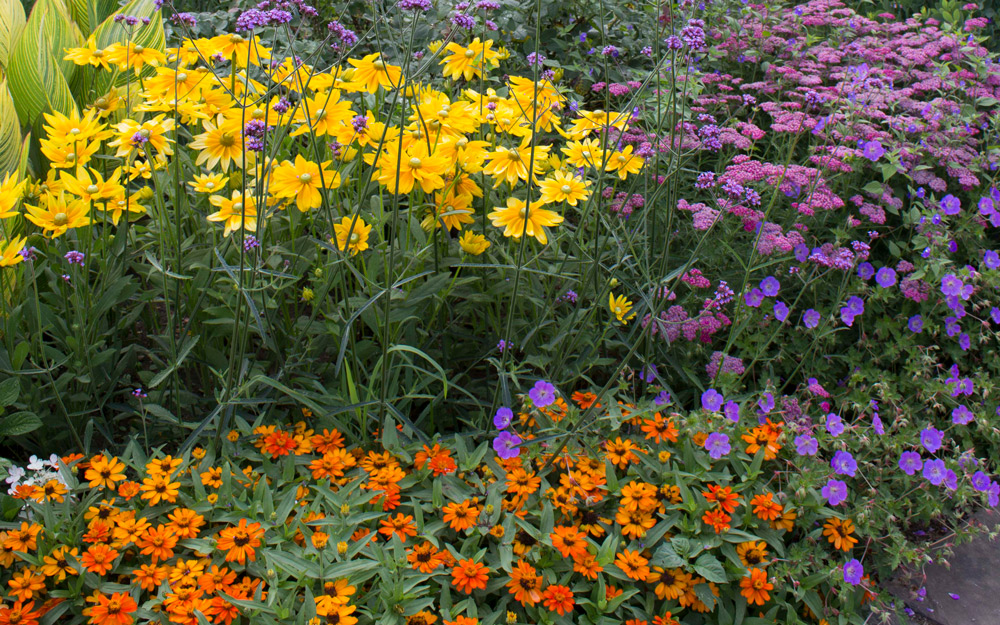
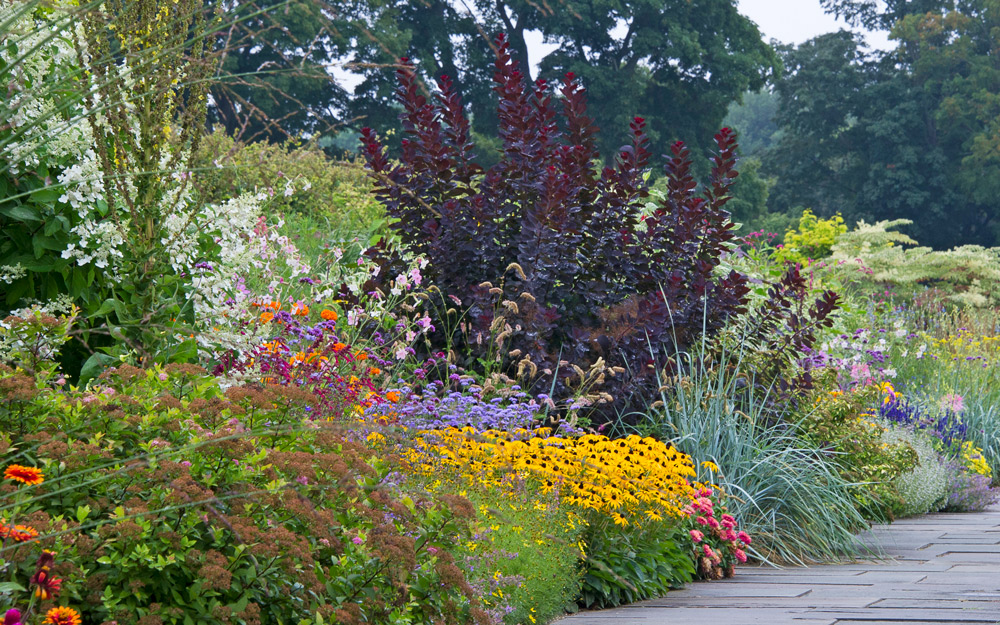
Play with perspectives. The medium-size shrub doesn’t have to sit at the middle or back of the border. Plant it at garden’s edge to create a surprise or a focal point, or to facilitate a transition from one section of the garden to another.
Plant for all seasons. White Flower Farm’s Lloyd Border begins the season with colorful displays of spring-flowering bulbs, segues into early blooming perennials, greets high summer with midseason bloomers and plenty of colorful and textural annuals, then changes colors and textures for fall as Ornamental Grasses, Dahlias, and plants with striking fall foliage shades steal the show. Use your garden space to orchestrate distinct seasonal displays.
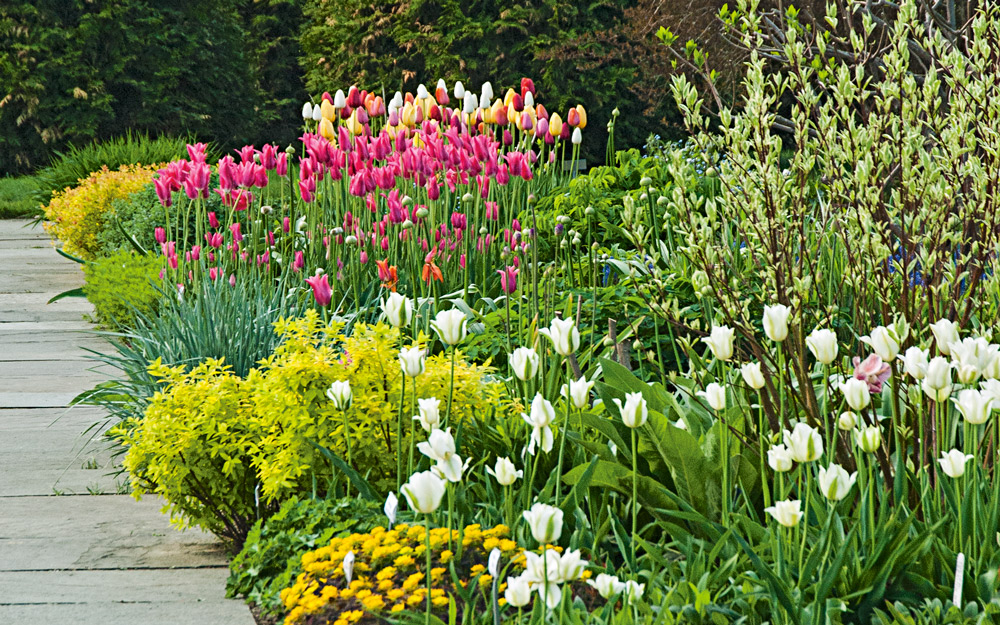
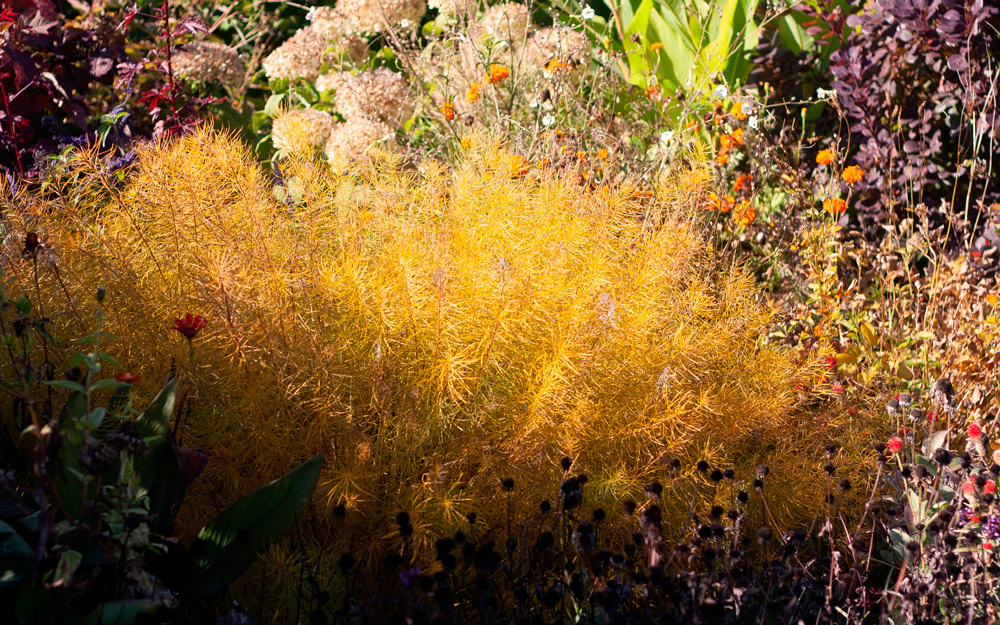
Balance art and Nature. Heavily manicured borders always appear manmade. Aim for Lloyd and Garrett’s more naturalistic style, one that allows plants to grow exuberantly, overspill their spaces, and billow with abandon. In your garden, decide when to exercise control and when to let Nature work its magic.
Don’t tidy up too soon. While we tend to do a fair amount of our cleanup early in the border at White Flower Farm, “Plants [at Great Dixter] are not cut down in the autumn and winter period until the spring tidy-up begins, providing us with valuable skeletons for a winter effect and a good food source for animals,” Garrett says.
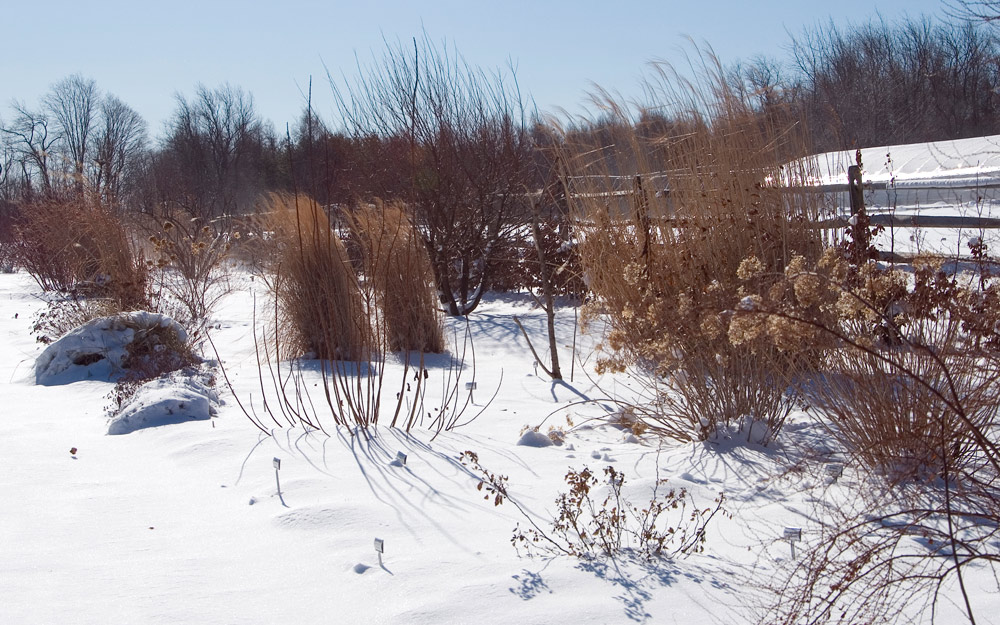
Selections from the Lloyd Border
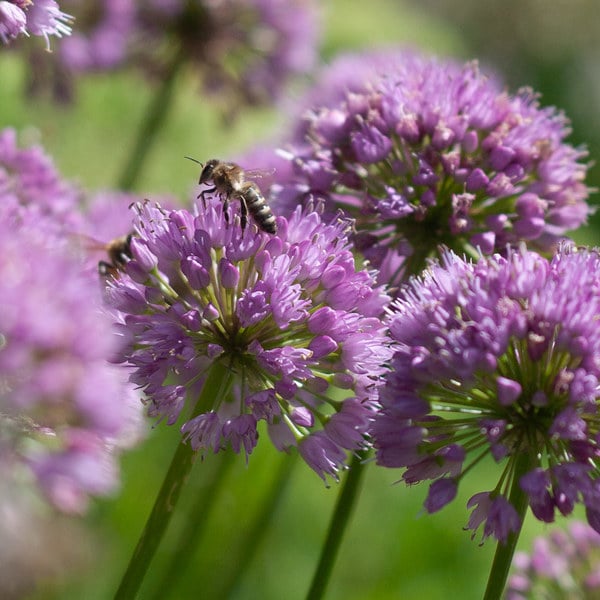
PERENNIAL:
Allium ‘Millenium’
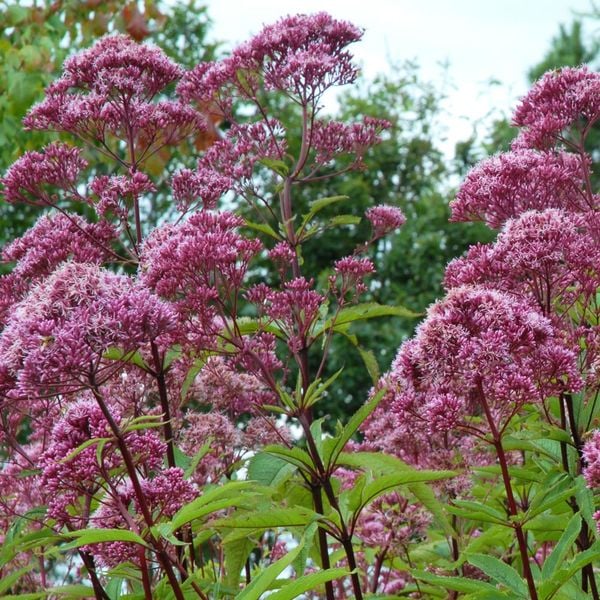
PERENNIAL:
Eupatorium maculatum ‘Gateway’
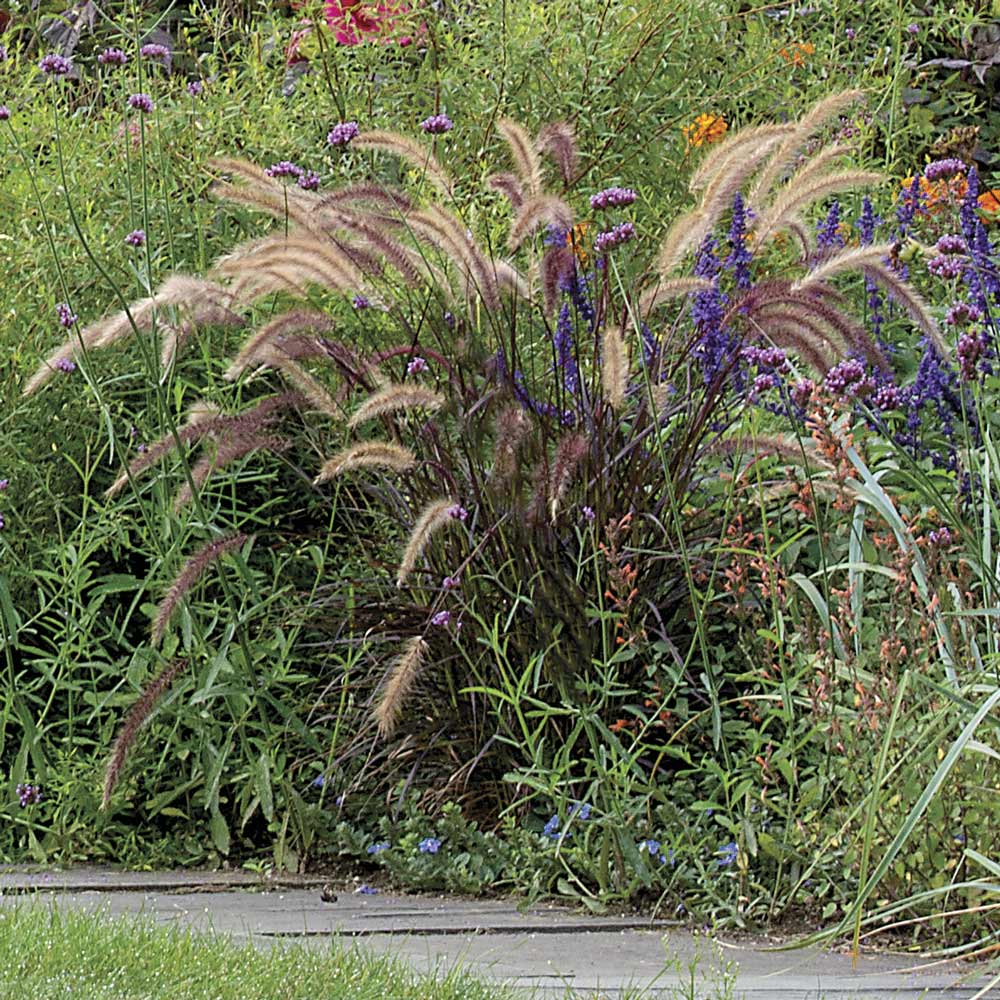
ANNUAL:
Pennisetum setaceum ‘Rubrum’
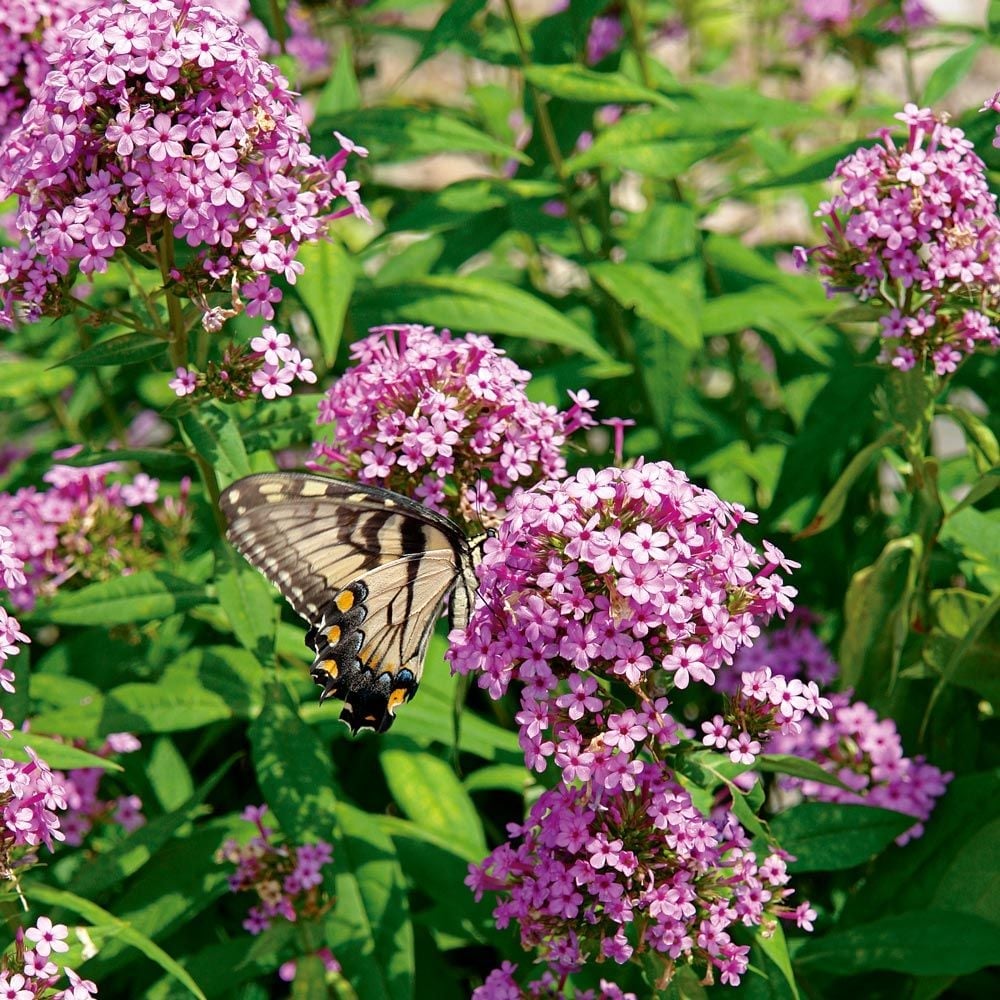
PERENNIAL:
Phlox paniculata ‘Jeana’
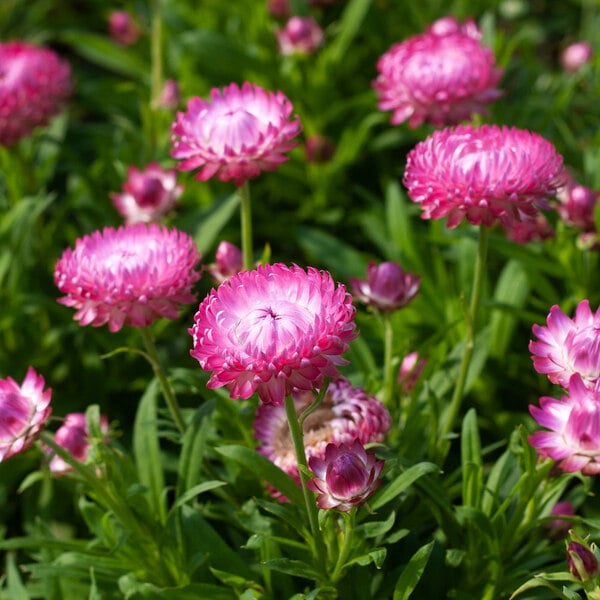
ANNUAL:
Bracteantha Granvia® Pink

